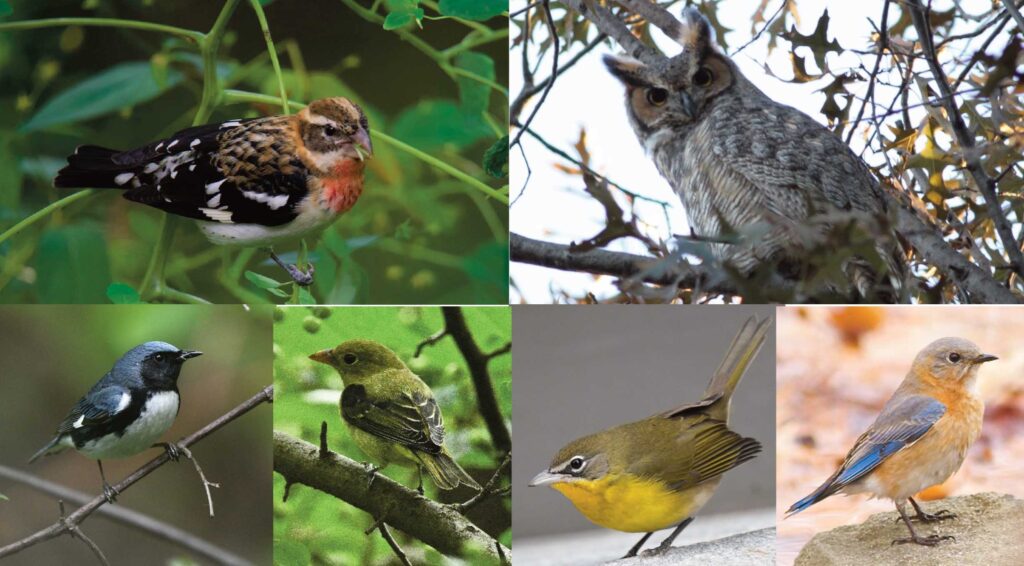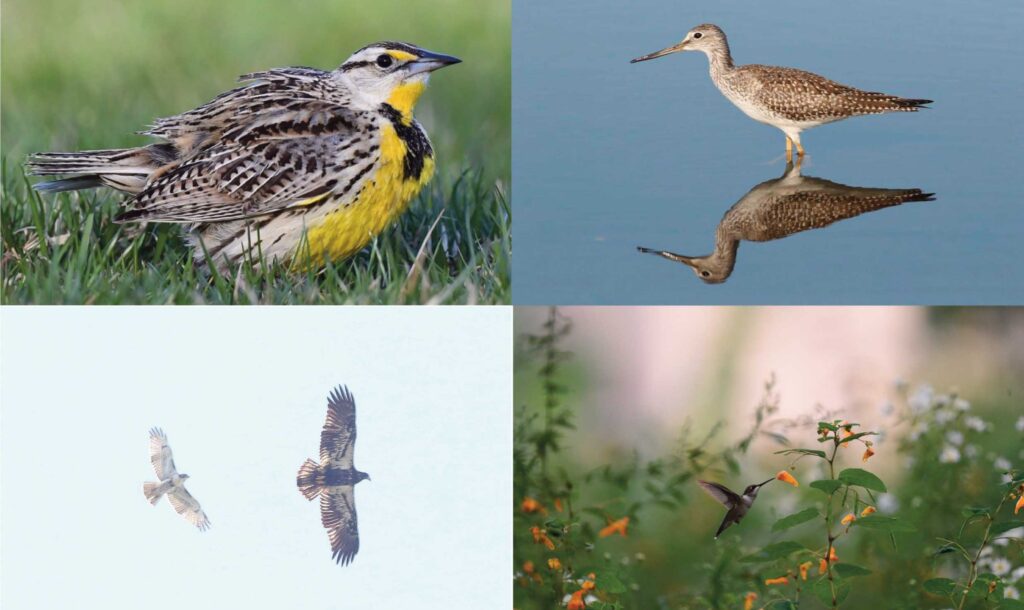New York City’s Central Park is the place to bird watch during the Fall Migration. With its unique habitats it offers birders spectacular views of migrating birds.
The great fall migration begins with the movement of shore birds in late July. The Central Park Pond, Lake, and Pool often become a good stopover point for Spotted and Solitary Sandpipers. These birds bob along the shoreline grabbing small insects and crustaceans. Some good locations to observe the sandpipers are the 103rd street Pool, the Gapstow Bridge wetland area at 59th street, and the Central Park Lake. In addition, you can also find Wilson’s Snipes, Least and American Bitterns, and American Woodcocks foraging for food and seeking temporary shelter.

Woodland Warblers, Ruby-throated Hummingbirds, Scarlet Tanagers, and Rose-breasted Grosbeaks begin to arrive in late August and remain through early October.
The warblers, no longer in breeding colors, are heading south with their immature offspring. Some warblers are brown or olive green with one or two wing bars. This gives credence to the phrase “confusing fall warblers.” It is often a challenge to identify some warblers, which adds a bit of mystery and fun to birding. A bird guide can help you identify confusing fall warblers. Bird walks are offered by the Linnaean Society all year. Please visit our website for the schedule.
The Ruby-throated Hummingbirds zip through the garden on their way to Mexico and Central America, where they will spend the winter. Their journey of 600 miles is often covered in a single flight! They gather precious nectar from the Park’s flowers – Jewelweed and Cardinal Spikes are their favorites. The nectar provides them with the energy needed for the long flight. Look for orange blossoming Jewelweed and Ruby-throated Humming- birds throughout the park.
Scarlet Tanagers and Rose-breasted Grosbeaks arrive to feast on the berries of the Park’s dogwood and cherry trees. Their dull but brilliant feathers are still a sight to behold. The male Scarlet Tanager molts from bright red to a greenish yellow in the fall. Immature Rose-breasted Grosbeaks are usually a combination of brown, black, and red feathers, adding allure to this already spectacular bird.
Without a doubt, the greatest show in September is created by the migrating Hawks and Eagles. Bald and Golden Eagles, Red-tailed Hawks, Broad-winged Hawks (by the thousands), Peregrine Falcons, Merlins, Sharp-shinned Hawks, American Kestrels, Cooper’s Hawks, Osprey, and Turkey Vultures are all migrating to their winter grounds. The Linnaean Society holds hawk watches from Belvedere Castle, which provides great looks of the surrounding skies. With many eyes looking up, and enjoying the effort, we can identify the raptors as they fly over our heads or skirt the outline of the park on fashionable Fifth Avenue.
New York City is situated in the middle of the greatest stream of migrating birds—in a unique ecosystem of coastal wetlands, forests, meadows, and woodland habitats— which makes up the Atlantic Flyway. The hawks ride the warm thermals of air along the Eastern Seaboard, often conserving energy by gliding as they journey to warmer climates.
The month of October brings the sparrows; Lark, White-crowned, Fox, Vesper, Savannah, Clay-colored, Chipping and other species visit our area during October and sometimes linger until mid-November. Sparrows are seed eaters and delight in pulling out the thistle seeds from plants and shrubs. Look for these “little brown jobs” in the compost heap, Dene Slope, and most of the meadows in the North Woods. These meadows produce seed-bearing plants which are consumed by hungry sparrows.

And we also get surprise birds such as early migrating Long-eared Owls, Eastern Meadowlarks, Eastern Blue birds, Yellow-breasted Chats, Eastern Whip-poor-wills, and Common Nighthawks.

